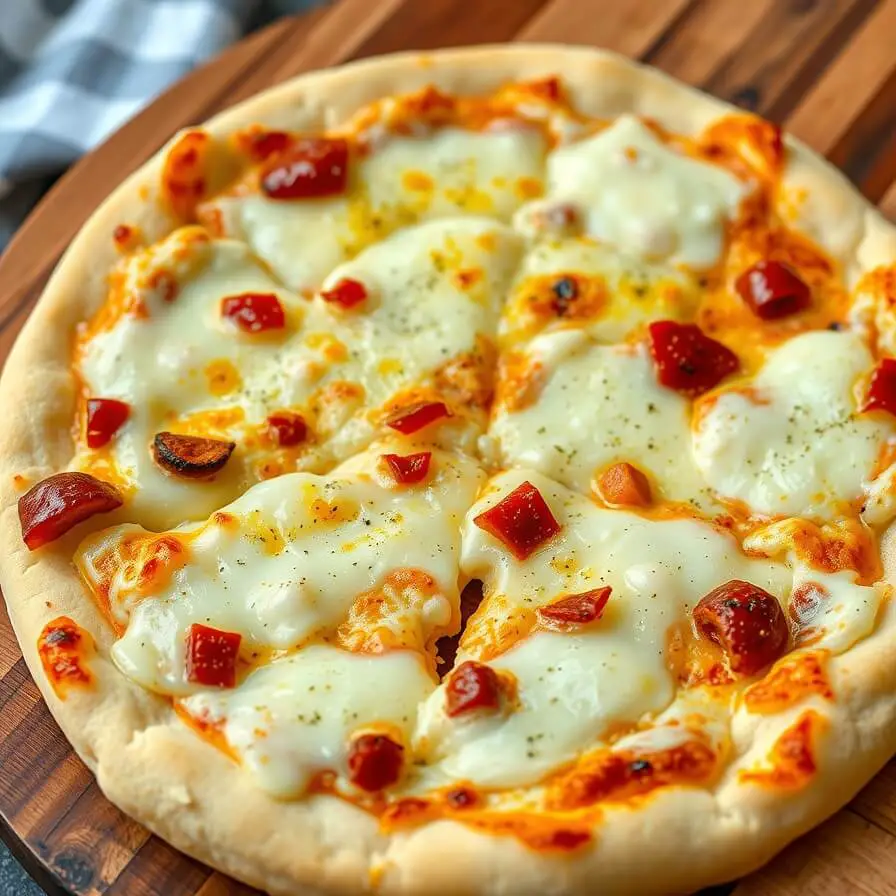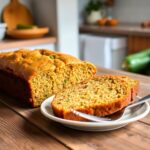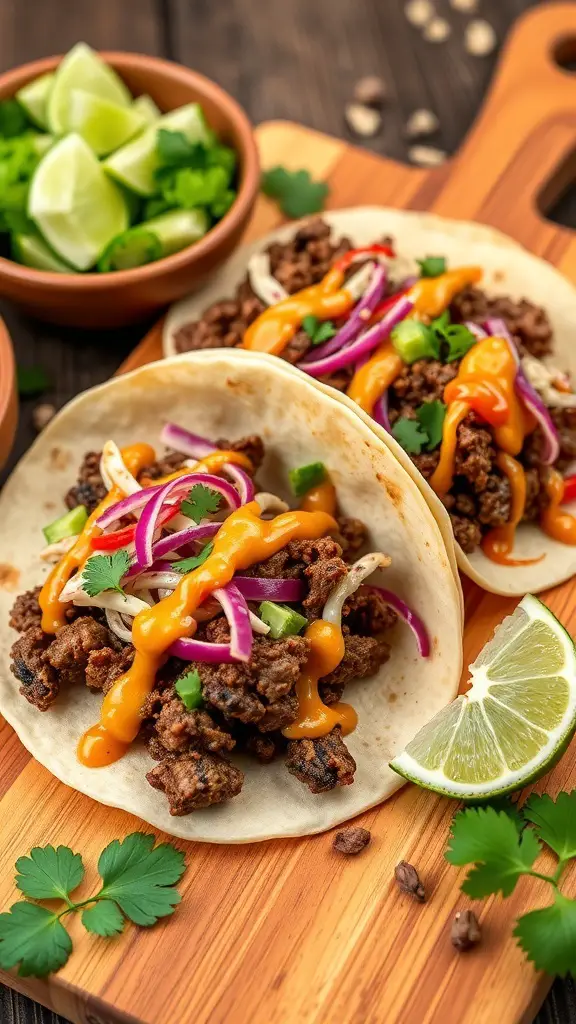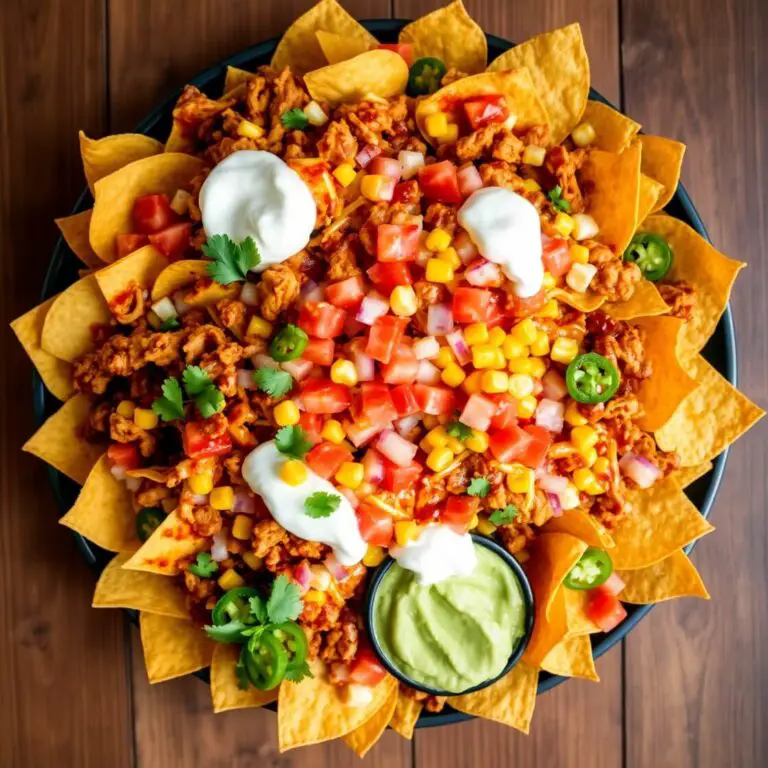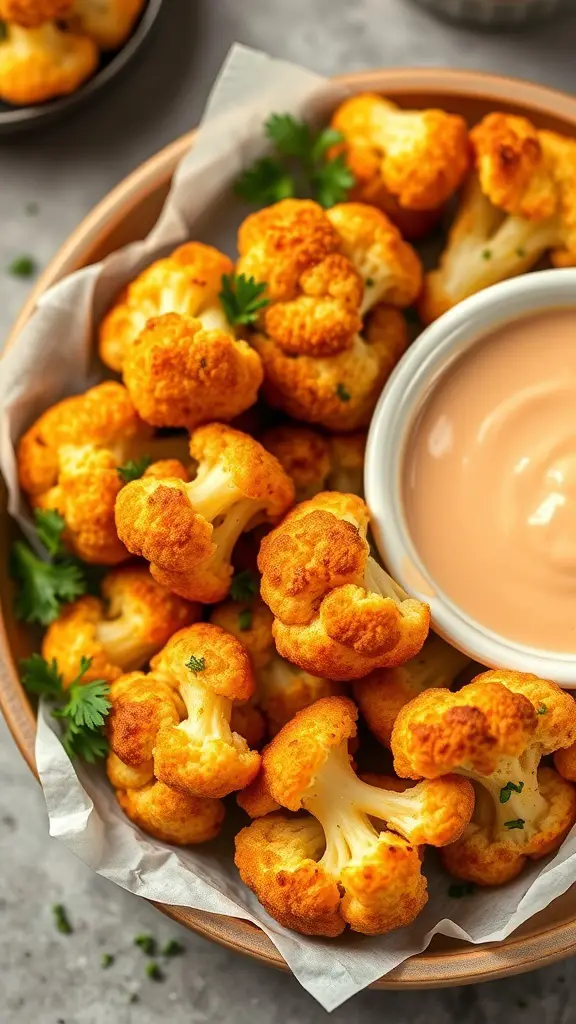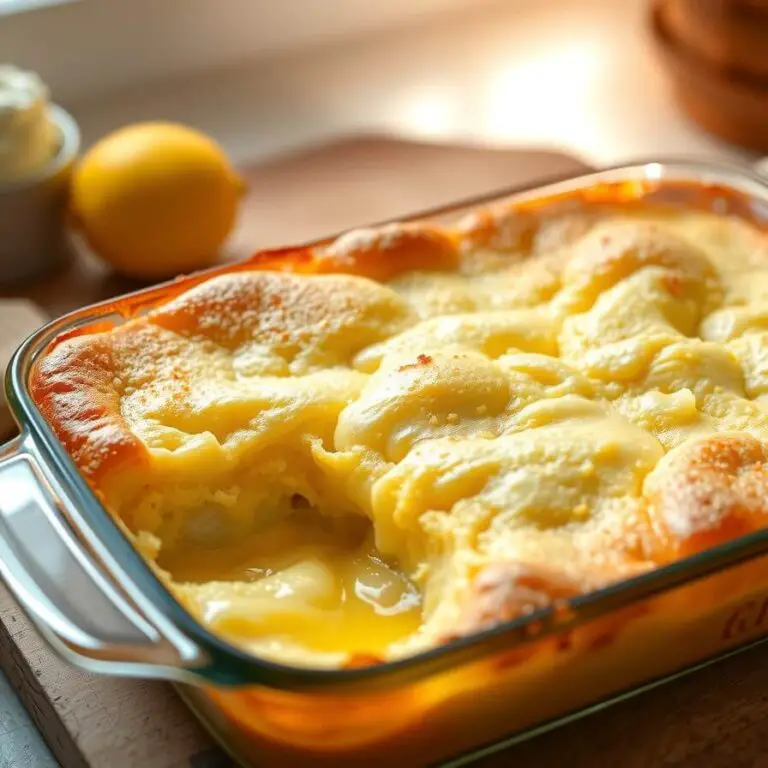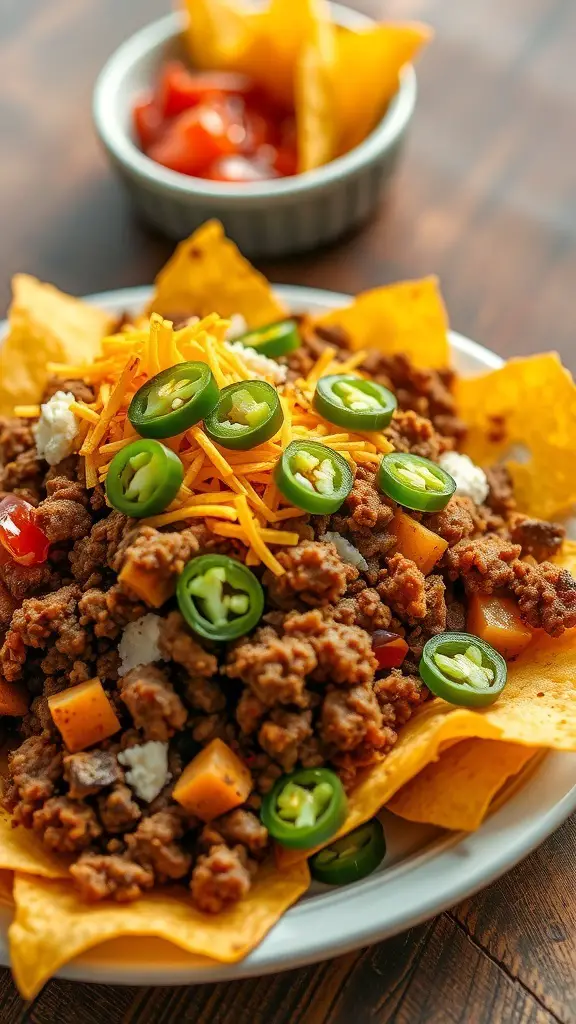
I still remember the first time I attempted a fully carnivore-style pizza crust. It was one of those evenings when I was craving something warm, cheesy, and comforting—but I didn’t want to deal with flour, kneading dough, or feeling heavy afterward. I’d been experimenting with low-carb, carnivore-friendly meals, and somewhere between whisking eggs and melting mozzarella, the idea hit me: what if pizza night could stay delicious without the carbs?
This crust has become a quiet hero in my kitchen. It’s the kind of recipe I pull out on nights when I want something indulgent but still simple enough that I don’t overthink it. I’ve served it to my family, too; my brother still insists that I cheated and used “real dough.” That’s how convincing it is.
The beauty of this carnivore pizza crust is that it lets you enjoy pizza without compromises. It’s filling, customizable, and surprisingly quick—perfect for evenings when you want to treat yourself without stepping away from your diet. And honestly, that first bite—the blend of salty cheese, savory meatiness, and bubbly golden edges—still gives me the same comfort it did on that first spontaneous attempt.
Why I Love This Recipe
There’s something undeniably satisfying about eating a pizza crust that feels rich and hearty, yet doesn’t rely on flour or complicated dough-making steps. What makes this carnivore pizza crust so special is its simplicity. You’re working with wholesome, protein-packed ingredients that come together to create a surprisingly sturdy base. It holds toppings beautifully and satisfies even the most intense pizza cravings.
I also love how forgiving this recipe is. Traditional dough demands precision: measurements, temperature control, rising times. But this crust? It just needs a bowl, a whisk, and a baking pan. If you’re someone who likes to feel confident and relaxed in the kitchen, this is the kind of recipe that will make you feel competent with very little effort.
For anyone following a carnivore, keto, or low-carb lifestyle, this pizza crust is a game changer. It offers the comfort of a classic dish while staying entirely within dietary boundaries. No grains, no gluten, no unnecessary fillers—just a delicious foundation for all your favorite toppings. And because the crust is protein-rich, it actually leaves you feeling satisfied instead of sluggish.
Ingredients for Carnivore Pizza Crust
When you first look at the ingredients, they’re deceptively simple—which is the charm of a carnivore recipe. Everything works together to create a flavorful, cohesive crust that doesn’t fall apart or taste overly eggy.
You’ll need eggs, which act as the binder. Mozzarella cheese (the low-moisture, shredded kind) helps create structure while adding that stretchy, cheesy backbone we all love. A touch of Parmesan brings depth and saltiness; it gives the crust a little extra crispness as it bakes. If you want to push the “meaty” flavor up a notch, you can add a few tablespoons of finely ground chicken, beef, or even pork rinds, but that’s completely optional.
The beauty of these ingredients is that they work exactly the way flour would, just without the carbs. The eggs mimic the elasticity, the mozzarella gives strength, and the Parmesan adds that browned, toasty finish.
And the best part? Every ingredient is easy to find and budget friendly.
How Much Time Will You Need
One of the main reasons I make this crust so often is the time it saves me. From start to finish, you’re looking at around 25 to 30 minutes.
About 10 minutes to prep, mix, and smooth the crust onto a baking sheet.
Around 15 to 18 minutes for baking, depending on how lightly or deeply golden you prefer your crust.
It’s perfect for weeknights, or even lunch when you don’t want to spend forever in the kitchen.
How to Make This Carnivore Pizza Crust
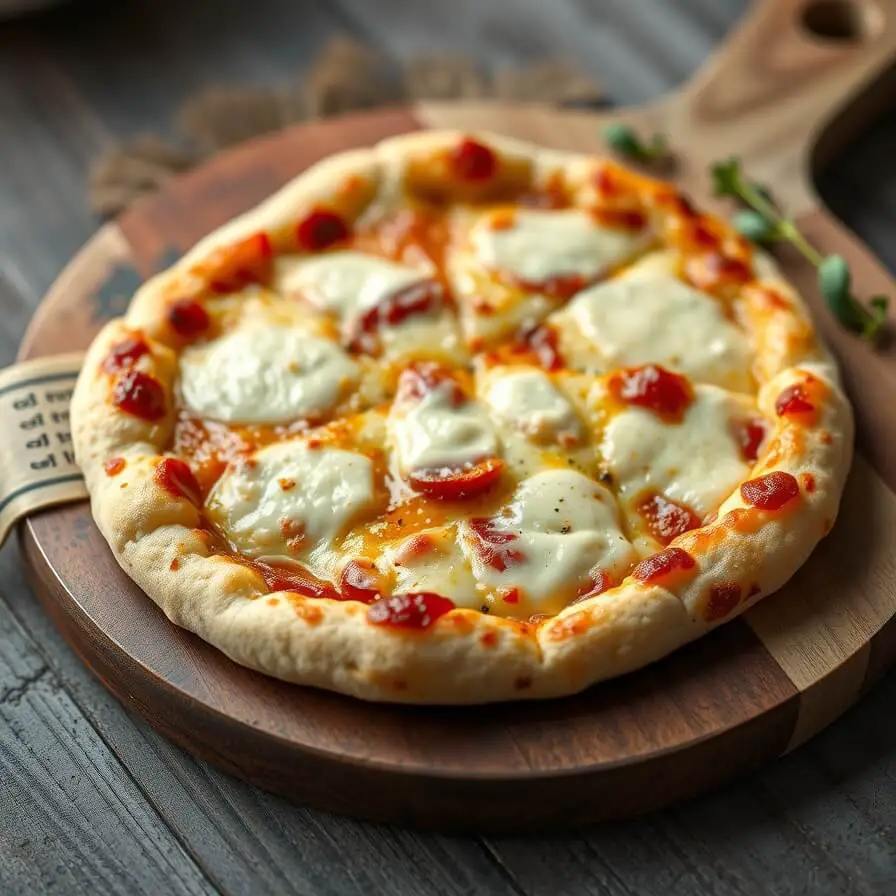
Step – 1: Preheat your oven.
Start by heating your oven to about 400°F (200°C). A properly heated oven is important because it allows the crust to set quickly, which keeps the center from becoming too soft. While the oven warms up, line a baking sheet or pizza pan with parchment paper—it prevents sticking and makes cleanup so much easier.
Step – 2: Mix the eggs.
Crack your eggs into a medium mixing bowl and whisk until fully blended. You want them smooth, frothy, and uniform. This helps keep the crust texture even and prevents any eggy pockets.
Step – 3: Add the cheeses.
Pour in your shredded mozzarella and grated Parmesan. Gently fold them into the eggs with a spatula or wooden spoon. It will look sticky and thick—exactly what you want. The mixture should be cohesive and spreadable.
Step – 4: Optional: Add meat or pork rinds.
If you prefer a slightly firmer crust, add your optional mix-in here. Ground chicken gives structure, while finely crushed pork rinds help absorb excess moisture. Mix well until everything is fully incorporated.
Step – 5: Spread the mixture into a crust.
Transfer your mixture onto your prepared baking sheet. Use a spatula to spread it into a thin, even layer. The thinner you spread it, the crispier the crust will be. Try to keep the edges tidy so the crust cooks uniformly.
Step – 6: Bake the crust.
Slide the pan into the hot oven and bake for about 15–18 minutes. Look for golden edges and a slightly firm center. Once it has set, you can remove it, add your toppings, and return it to the oven for a few extra minutes—or simply enjoy it as is.
Substitutions
If you want to play around with this recipe, there are a few substitutes that still keep it carnivore-friendly while adding new textures or flavors.
You can swap mozzarella with another low-moisture cheese, such as provolone or Monterey Jack. They won’t give the same pull as mozzarella, but they create a sturdy crust with a richer flavor.
Instead of Parmesan, you can use aged Romano or Asiago for a sharper, saltier finish.
If eggs aren’t your favorite, you can use just egg whites for a lighter crust, though it won’t be as rich. For added bulk, ground turkey or chicken can be mixed in to make the crust heartier and more substantial.
These little changes can tighten the texture, deepen the flavor, or help you adjust the crust to your personal taste without sacrificing structure.
Best Side Dish of Carnivore Pizza Crust
Here are a few dishes that pair wonderfully with this pizza crust:
Creamy garlic chicken bites, which mirror the richness of the crust
A simple meat broth or bone soup to balance the heaviness
Herbed butter shrimp for a light, savory contrast
Serving and Presentation Tips
There’s something almost nostalgic about pulling a homemade pizza out of the oven, even when it’s a carnivore version. One little hook I always remind myself of: presentation makes even the simplest recipes feel intentional and inviting. When I serve this carnivore pizza crust, I try to let the golden edges be the star.
Let the crust cool for a minute before slicing—it helps it firm up and makes the slices cleaner. If I’m serving it family-style, I like placing it on a wooden board because it gives that rustic “pizza night” feel. You can also drizzle a bit of melted butter or place a few slices of mozzarella on top for a glossy finish.
If you’re someone who notices the little details (like I do), cutting the pizza into smaller, appetizer-style squares makes it look neat and organized. It’s amazing how a simple crust becomes something truly special with just a little mindful presentation.
Tips and Tricks to Make This Recipe Better

Here’s a little hook that took me a few tries to learn: carnivore pizza crust behaves differently than flour dough, but once you understand its quirks, it becomes incredibly reliable.
If you want the crust extra crisp, bake it a few minutes longer before adding toppings. Also, spreading the mixture thinner makes a big difference—it cooks faster and firms up beautifully.
Another trick? Use low-moisture cheese. Fresh mozzarella, while delicious, releases too much water during baking and makes the crust softer. Sticking to pre-shredded, low-moisture mozzarella keeps the crust sturdy.
Preheating the pan can also help. Place the empty pan in the oven for a few minutes, then spread the mixture onto hot parchment. This gives you a firmer bottom and a slightly blistered texture. And finally, avoid overmixing—once everything is combined, stop. The more you stir, the more air you whip in, and that can make the crust puff oddly as it bakes.
Common Mistakes to Avoid
Here’s a quick hook: most of the mistakes with this recipe come from treating it like traditional dough. It’s not dough—it’s a protein-based crust with its own personality.
One mistake I often see is using too much cheese. It seems strange, but too much mozzarella can make the crust greasy and floppy. It needs balance. Another common misstep is spreading the mixture too thick, which leaves the center undercooked.
Skipping parchment paper is another big one. The crust sticks easily, and parchment makes the process smooth from start to finish. And finally, don’t rush the baking time. Even if the edges look done, the center needs a little patience to fully set.
How to Store It
Storing this crust is surprisingly easy. Once it cools, I place the slices in an airtight container with parchment between layers. In the fridge, it lasts up to three days without losing much texture.
If you want to freeze it, bake the crust first, cool it completely, then wrap it tightly in plastic before storing it in a freezer bag. When you’re ready to use it, reheating in the oven (not the microwave) helps restore crispness.
Leftovers warm up beautifully at 375°F for about 5–7 minutes.
FAQ
Can I make the crust ahead of time?
Yes, you can bake the crust in advance and refrigerate or freeze it. Add toppings and reheat when ready.
Does this crust get crispy?
It can! Spread it thin and bake a bit longer for a firmer, crispier result.
Can I use fresh mozzarella?
It’s not ideal because it releases too much moisture. Low-moisture mozzarella works best.
Can I add spices?
If you’re strict carnivore, skip them. If not, a pinch of garlic powder or salt works well.
Can I make it thicker?
You can, but it will be softer and more casserole-like. Thin is best for a true “pizza crust” feel.

Carnivore Pizza Crust Recipe
- Total Time: 28 minutes
- Yield: 1 1x
- Diet: Gluten Free
Description
This carnivore pizza crust is a simple, protein-rich alternative to traditional dough, offering all the comfort of pizza without grains or carbs. It bakes into a firm, golden crust that holds toppings beautifully and gives you that satisfying, pizza-night experience without the heaviness. Made with eggs, mozzarella, and Parmesan, it’s a straightforward recipe anyone can make, even on busy evenings. The crust is versatile enough for any topping combination and reheats extremely well, making it one of my go-to quick meals. If you’re following a carnivore or low-carb lifestyle—or simply want a lighter, gluten-free crust—this recipe delivers flavor, convenience, and comfort in every bite.
Ingredients
- Eggs
- Shredded low-moisture mozzarella
- Grated Parmesan cheese
- Optional: crushed pork rinds or ground chicken
Instructions
- Preheat oven to 400°F and line a baking sheet with parchment.
- Whisk eggs in a mixing bowl until smooth.
- Add mozzarella and Parmesan, stirring until fully combined.
- Optional: Mix in pork rinds or ground chicken for a firmer texture.
- Spread mixture thinly on the baking sheet.
- Bake until golden, about 15–18 minutes.
- Add toppings if desired and return to the oven briefly.
Notes
- Spread the mixture thin for the best crispy results. Use low-moisture cheese to prevent sogginess. Let the crust cool slightly before slicing.
- Prep Time: 10 minutes
- Cook Time: 18 minutes
- Category: Dinner
- Method: Baking
- Cuisine: American
Nutrition
- Serving Size: 1
- Calories: 300
- Trans Fat: 0g

